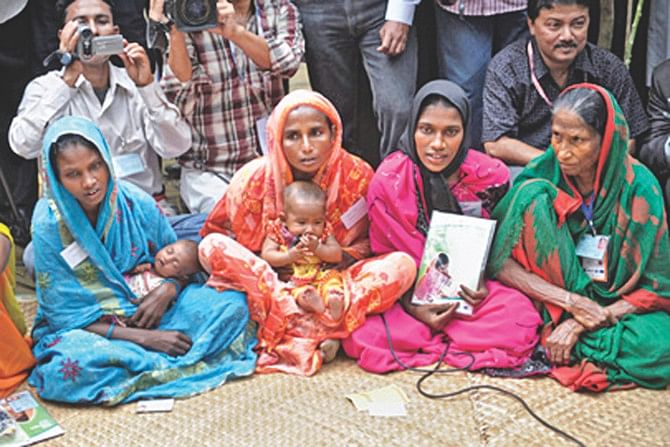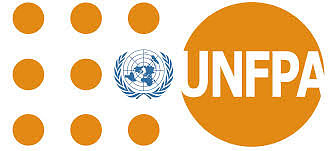Maternal Mortality affects development of a country

Maternal mortality rate in Bangladesh has declined by 66% over last few decades, estimated at a rate of 5.5% every year. The latest Bangladesh Maternal Mortality Rate is 170 per 100,000 live births as per UN and WHO estimates (2014). The MMR was 600 per 100,000 live births in 1975 and 574 in 1990. Bangladesh is well on track and striving hard to attain the target of 143 deaths per 100,000 live births by 2015 as envisaged in MDG-5. The contraceptive prevalence rate is around 61% as against the target of 72% to be achieved by 2015.
The extensive drive for pre-natal care, introduction of health vouchers scheme for poor women, deployment of community based skilled birth attendants, and introduction of the midwifery programme by the Government and United Nations Population Fund (UNFPA), other UN and development partners and NGOs in service delivery contributed to such successes. Additionally, a number of favorable changes occurred during this period like income per head increased sharply, the poverty rate fell and the education levels of women of reproductive age improved substantially.

While the above mentioned achievements would lift our morale, there is no scope to be complacent as yet. There are many challenges ahead which the nation has to face with unwavering determination, such as, more than 5000 women die during child birth every year; 70% of pregnant mothers suffer from acute anemia and the high rate of adolescent pregnancy persist in Bangladesh. It is estimated that about 16 women per 1 maternal death suffer from various diseases related to pregnancy and child birth e.g. Obstetric Fistula, Uterine Prolapse, anemia, etc.
The major causes of Maternal Mortality are - postpartum haemorrhage (31%), Eclampsia /pre-eclampsia (20%), delayed & obstructed labour (7%), Abortion (1%), other direct cause (5%) and indirect cause (35%).
The key factors affecting maternal deaths are knowledge attitude and practice of family planning and safe motherhood care as well as accessibility& availability of contraceptives. Bangladesh has achieved success in family planning programs against the backdrop of low literacy rate, low status of women, low income and so on. Major successes in population sector programs were achieved in expanded access to family planning services with the introduction of a broader range of modern and effective methods. Use of contraceptives and quality family planning services can avert more than 32% of maternal deaths and 10% of child mortality if couples spaced their pregnancies more than two years apart. According to the BDHS 2011, the unmet need for Family Planning is 13.5% and the family planning programme of the Government is focusing on addressing this issues.
UNFPA Bangladesh supports Family Planning service delivery in Bangladesh through system strengthening vis a vis quality assurance, capacity building of newly recruited doctors and FWVs for clinical contraception and post-partum FP, capacity building of field workers on inter-personal communication and internet communication technology and strengthening training centres through procurement of equipment, national FP campaign, the observance of FP Service and Campaign weeks and World Population Day, promoting the use of long acting and permanent method for eligible couples and training on inter-personal communication (IPC) and implementation of the National Plan of Action on ASRH.
UNFPA has been supporting the Directorate General Of family Planning (DGFP) in providing Emergency Obstetric Care through 70 Maternal and Child Welfare Centres (MCWCs) throughout the country. The components of this support are through training of doctors on Emergency Obstetric and Neonatal Care.
The proportion of births attended by skilled health personnel has increased from 5% in 1990 to 31.7% in (BDHS 2011) but still 71% of delivery occurs at home. To reduce maternal mortality and morbidity, UNFPA is supporting the community skilled birth attendant (CSBA) as well as training and establishment of the new Midwifery cadre. To comply with the Honourable Prime Minister's commitment at the 65th General Assembly at the UN to create new cadre of 3000 midwives in country, UNFPA is supporting the Government to develop the midwife as a professional. Efforts include capacity assessment and assistance for midwifery education, development of strategic directions and mentorship programmes.
More than 1100 students have already enrolled in a 3 year diploma midwifery course since 2012. The first batch will come out in 2015. For the time being, UNFPA has been supporting the 6-month post- basic advanced midwifery training for nurse-midwife through Nursing Institutes/ colleges in the public sector. Since 2010, a total of 1103 nurse-midwives have been trained. They are serving in different public sector hospitals. These programmes are supported by UNFPA through the Directorate General Of Health services (DGHS)
Pregnancy and childbirth-related complications are the chief causes of maternal mortality and morbidity in Bangladesh. In addition, the status of women is low and this severely hinders their families and their access to reproductive health care. Obstructed labor is the most common cause of obstetric fistula (OF), the immediate causes of obstetric fistula are obstructed labor and a lack of emergency obstetric care, pervasive poverty is an important underlying cause. Women who suffer from OF are mostly very poor, malnourished, lack basic education and live in remote, rural hard to reach areas. The traditional practice of early marriage and childbearing contributes to a risk of obstructed labor and fistula. The low status of women, particularly young women just after marriage, play a fundamental part in fistula development. Some women are denied access to health care, or are actually harmed due to cultural beliefs and traditional practices. Some women may live in seclusion and, for many, the responsibility to decide for seeking health care in pregnancy, or even after prolonged labor, depends upon the husband or other family members, including the mother-in-law. When these women fail in their perceived duty to bear live children and, still worse, develop the stigmatizing condition of OF, they are often rejected by their husband's family and have no means of subsistence. They are usually immediately abandoned and left to fend for themselves.
In Bangladesh as per study undertaken in 2003, 1.69/1000 ever married women are suffering with obstetric fistula. Taking into account; three global approaches Prevention, Treatment and Rehabilitation to end obstetric fistula Bangladesh government's health department with technical and financial support of UNFPA launched the project in October 2003. Since then this project is facilitating capacity development of service providers, nationwide campaign to aware community about obstetric fistula, rehabilitation of the fistula victims through skill development so that they can return to their normal lives. UNFPA supports Fistula treatment, rehabilitation, prevention and awareness programme to bring an immediate tangible change in the quality of life of the women suffering from Fistula.
For prevention, treatment and rehabilitation of Fistula patients UNFPA has helped to set up the National Fistula Centre at Dhaka Medical College hospital and also strengthening additional nine Medical Colleges Government Hospitals for the treatment of fistula patients. An integral part of this technical support is the capacity development of services providers where 250 Doctors and about 300 Nurses received training on Fistula Surgery. About 3,500 cases treated in government medical college hospitals since 2003.
- MMR in 1990 was 574 per 100,000 live births
- MMR now stands at 170 per 100,000 live births
- Rate declined by 66% over the last few decades
- Target 143 deaths per 100,000 live births by 2015
- UNFPA supports the DGFP in providing Emergency Obstetric Care through Maternal & Child Welfare Centres
- UNFPA supports Community Skilled Birth Attendants as well as training and establishment of the new Midwifery cadre.
- Increase in female education and deployment of family planning services brought advances in women's health.

 For all latest news, follow The Daily Star's Google News channel.
For all latest news, follow The Daily Star's Google News channel. 



Comments